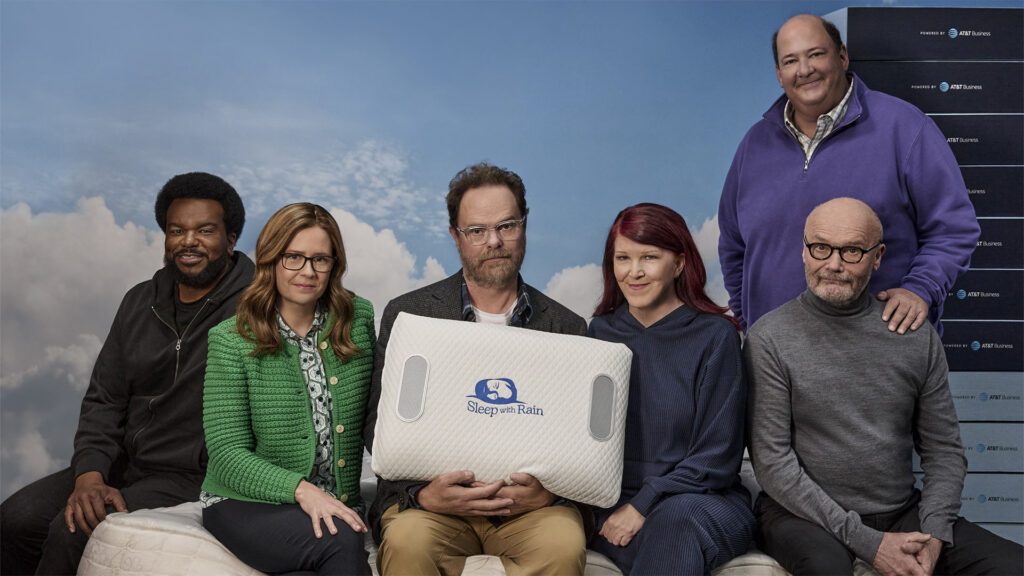Travel was one of the hardest hit categories of 2020, as consumers avoided airplanes, trains and hotels for fear of being in close quarters with other people and risking exposure to COVID-19. With the virus hitting Wave 2 across the globe, the travel industry still faces uncertainty as it looks ahead to next year.
However, positive news around potential vaccines is promising and travel brands are trying to stay optimistic about the potential for next year.
“We don’t expect travel to rebound to pre-pandemic levels until a vaccine is widely available and vaccination rates represent more than half of the populations we serve,” says Luc Bondar, United’s vice president of loyalty and marketing and president of United MileagePlus.
“Multiple studies have found that an aircraft cabin is one the safest places you can be outside your home, yet a full rebound is only possible when major vacation destinations can fully reopen, when it’s once again safe to hold large gatherings like concerts and conventions, and when we are all able to get back to work and meet with others in the office,” Bondar continues. “Until then, United will continue to use science-backed guidance from experts at Clorox and Cleveland Clinic to shape our cleaning and safety polices, and ensure we remain a leader in creating a safer flying experience for our customers and employees.”
It is clear that it will take time to rebuild consumer confidence in travel again, but one element that boosts optimism among travel brands is the joy that going on trips brings. In fact, many consumers cannot wait until they can travel again.
“We’ve all been reminded just how important real connections are,” says Elizabeth Windram, Vice President, Marketing at JetBlue. “Showing up in person, remains irreplaceable by technology, whether it’s to hug your grandchild or to see your old friends or to see the Grand Canyon. With science guiding us on what makes air travel as safe as other daily activities – HEPA filtration and mask wearing onboard being two of the most effective tools – we expect a return to travel. Everyone is excited about that first trip they’ll take when they are ready. I expect that travel won’t be something we put off any longer.”
The U.S. Travel Association predicts that U.S. travel will rebound: reaching $855 billion in 2021, up from $622 billion in 2020, but still down from $1.127 trillion in 2019. It won’t be until 2023 that the industry surpsasses 2017 numbers, the organization adds.
Consumer desire to go on vacation will be a strong driver of this rebound. A recent study from Hilton found that 95% of consumers are missing travel right now and 89% say that travel memories are some of their happiest memories.
“We’re all feeling optimistic about the return of travel, especially on the leisure side,” says Whitney Magnuson, Senior Director, Social Media, Hilton. “Our social listening and consumer testing work shows that people haven’t lost their love of travel — if anything it’s actually increased as they yearn for a getaway from 2020 stress — and in most cases, people are looking forward to rescheduling trips they may have delayed.”
“Insights from our most recent U.S. marketing initiative reflects consumers’ desire to reconnect with the people and places they love,” Magnuson continues. “Our marketing approach is to remind guests about what they love most about travel, while also bringing in the proof points of how we’ve adapted to this new world: highlighting things such as our Hilton CleanStay program to ensure a safe and healthy trip and ensuring we have flexible booking and loyalty policies that allow our guests to book with confidence.”
Messaging that plays up cleaning protocols and hygiene measures are the first step in making consumers feel that staying at a hotel is worth the risk of leaving home. Many consumers have been more willing to travel locally to destinations they can get to by car to help feed their desires to travel, meaning less international travel and more trips within 100 miles from home. Expect this to continue to continue into 2021.
“In the short term, we expect to continue to see strong performance in drive-able, domestic destinations, especially where guests can indulge in outdoor activities — through the spring, expect to see lots of folks taking ski trips, visiting national parks, and exploring regional wine destinations,” Magnuson adds. “Longer term, we’re seeing so much pent-up demand, that we expect many people will actually plan longer, bigger, or more extravagant vacations in late 2021 or into 2022 than they normally would.”
Bill Tierney, Vice President of Marketing at Southwest Airlines, anticipates 2021 to be full of innovation but also almost as fragile as 2020.
“In the past year, the travel industry has seen never before sustained headwinds, hyper-innovation, and resolve to continue forging through an onslaught of challenges from the pandemic itself to evolving customer needs,” says Tierney. “The COVID-coaster continues as rising cases once again lead to more geographic travel restrictions that hinder interest and comfort with taking that next trip.”
“We remain very cautious and understand that leisure travel demand is fragile today and overall travel demand likely will be throughout much of 2021,” Tierney continues. “We expect that the travel industry is looking at a long recovery, but we are hopeful as we’ve seen some growth as we continue adapting to customer needs and expectations, while simultaneously offering new places for them to visit. Southwest has added a few new cities during fourth quarter 2020 with several more new cities to our route map across the United States in 2021, and remain laser-focused on prudent growth opportunities. Our People will ultimately power us through the storm.”
Hospitality is a key ingredient to connecting to consumers during this time. “Hoteliers have had to get creative around providing a personal touch while remaining impersonal due to COVID parameters,” says Jason Pirock, Director of Marketing at Aparium. “Think body language with smiles hidden behind masks, a firm handshake and a warm, hospitable hug.”
“In addition, the ever-pressing challenge of instilling confidence as it pertains to cleanliness and the safety for guests,” Pirok continues. “While I foresee a slow ramp up, the industry will prevail. Smaller markets and hotels will bounce back quicker. I expect to see continued creativity with the use of spaces, increased use of technology to not only improve the guest experience, but streamline it and finally, a greater focus to minimize the number of touchpoints.”
In 2021, consumers will also expect more flexibility from travel brands as they feel less secure about what will happen next week or next month.
“They will expect far more flexibility from airlines, hotels, and travel services –free cancellation, adapting operations to any current health or safety concerns,” says Kristi Gole, VP, Head of Transformation at Global Hotel Alliance.
Personalization will also play a key role as people will look more to brands they trust to meet their needs in time of crisis. Brands that can personalize the experience and offer touchless low-contact points will succeed more in 2021.
“As personalization has become the focus for everyone in recent years, it will continue to be accelerated to ensure content and messaging match the mindset and expectations of travelers,” Gole says. “It’s no longer just about demographics or past travel behavior, but also about comfort and risk-aversion, as well as desire. Consumers give us constant clues to what is of interest to them or not at that point in time, and the challenge will be to watch/capture/apply those clues so that timing and messaging are relevant, to establish or maintain the relationship.”
Even as things lightened up in the summer and some consumers splurged on local hotels for staycations, revenue-driving business travel may take time to return. Companies are not going to require employees to travel for business until they are certain that it is safe to do so.
“Business travel will be reduced as the world has adapted to virtual meetings and conferences,” says Gole. “Zoom/Teams/GoToMeeting have become increasingly valuable tools to interact remotely and still feel a connection.”
“However, they cannot replace the actual connection and relationship-building, as well as the creativity and ideation, that come from being in-person,” she continues. “Business travel will remain, just in an edited form: what used to be a one-meeting trip will be avoided, 3-4 trips/month may reduce to 1-2/month plus Zooms. Though it may be like direct mail was: if fewer and fewer are doing it, those businesses who do show up will stand out.”




